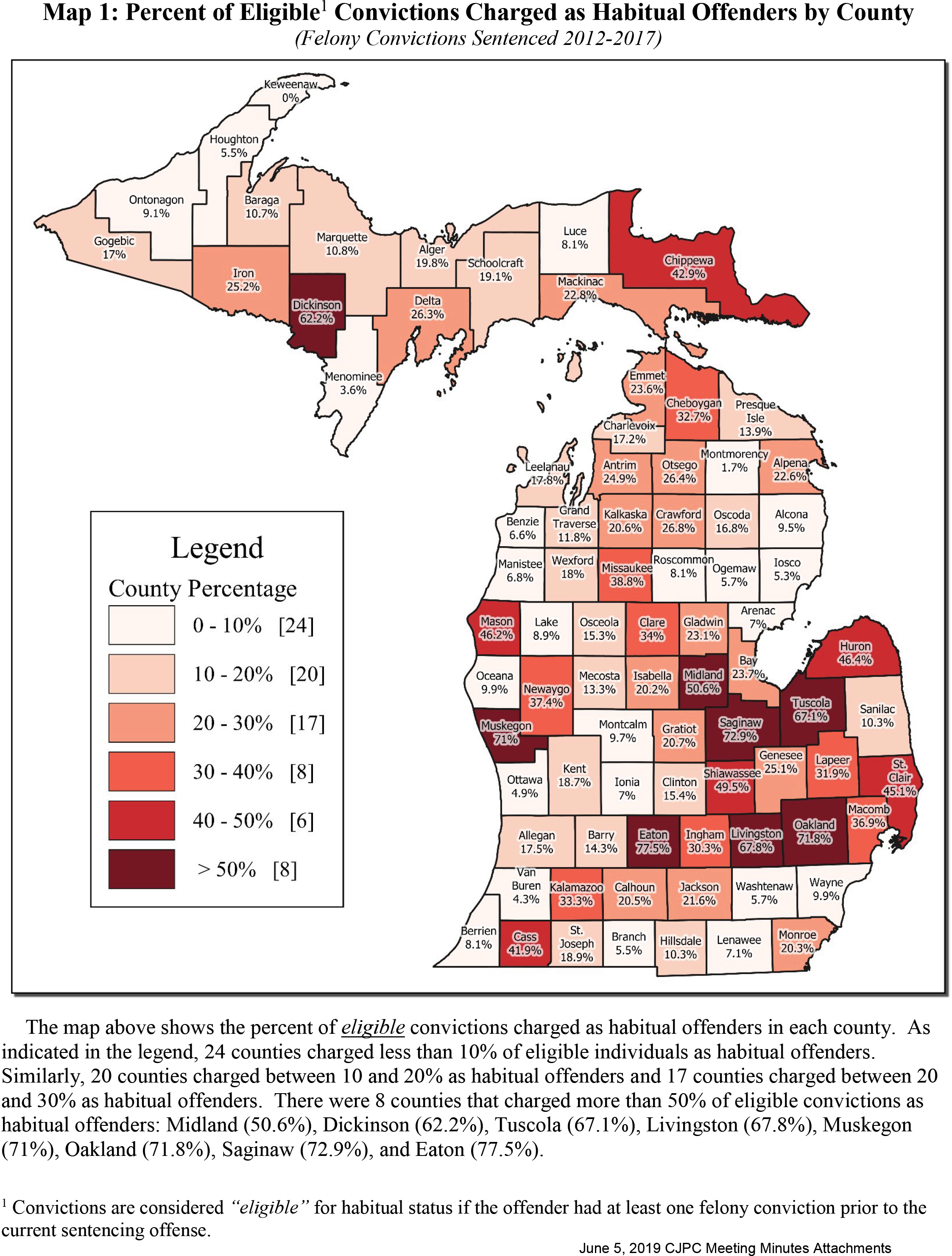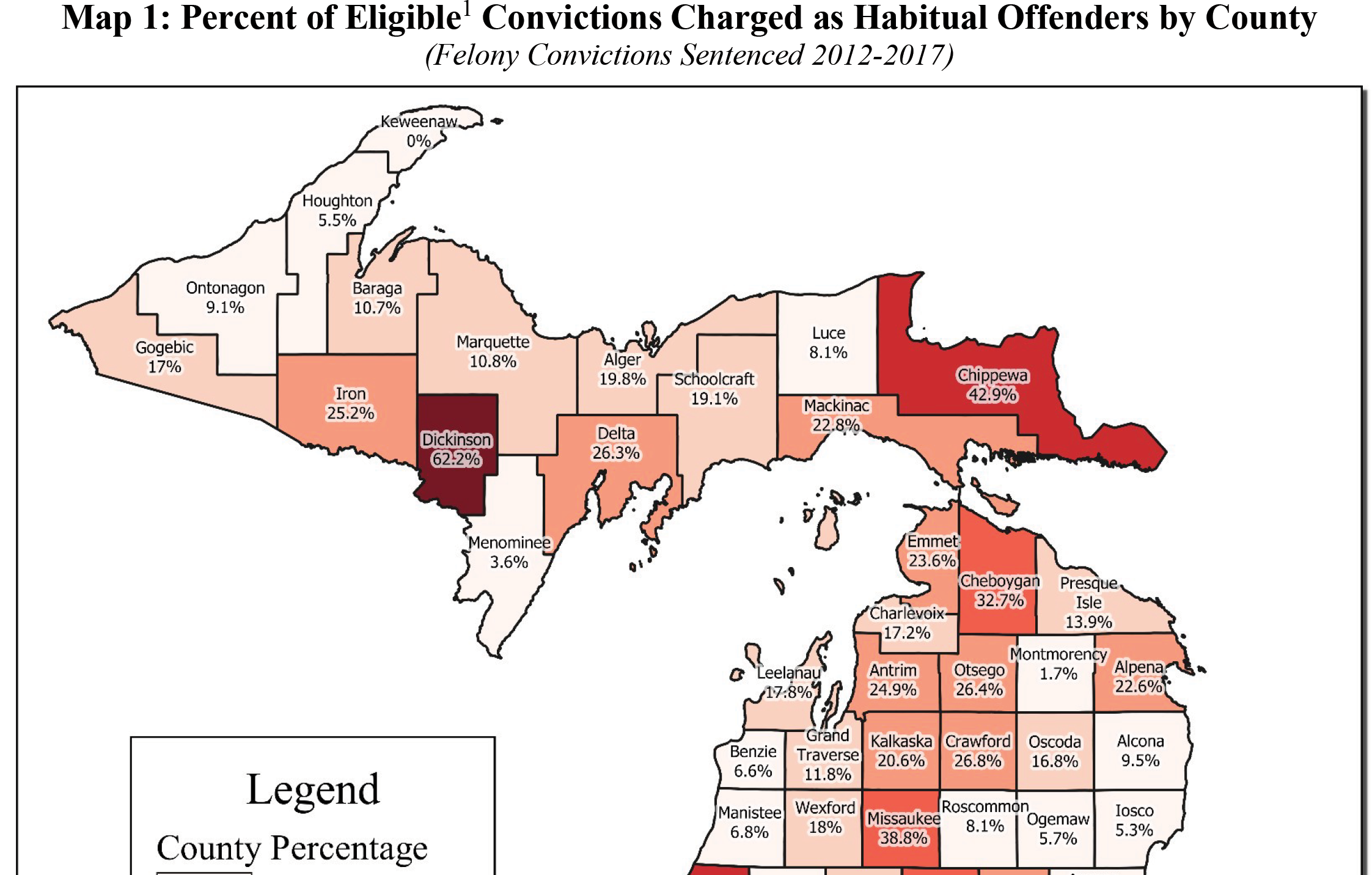Two weeks ago, the ACLU of Michigan, with state Sens. Curt VanderWall (R-Ludington), Jeff Irwin (D-Ann Arbor) and Sylvia Santana (D-Detroit) announced a forthcoming bill package to reform habitual sentencing in Michigan. The proposed reforms will address four concerns related to habitual sentencing, one of which was discussed in an earlier blog, that resulted in the Criminal Justice Policy Commission (CJPC) supporting the recommendation. To better understand the need for this reform, this blog is an overview of the number of people impacted by these sentencing enhancements.
As described in the earlier blog:
Under Michigan’s current habitual offender law, once you have previously been convicted of one or more felonies (or attempts to commit felonies), you can be sentenced for subsequent felony charges as a “habitual offender.” A habitual offender faces sentencing enhancements ranging from 25 percent, 50 percent, or 100 percent depending on the number of previous felony convictions on top of any sentence they could receive for an immediate offense for which they are being convicted. The statutory maximum is also increased by this law.
The information used for this overview is from the CJPC PRV/Habitual Offender Subcommittee available here. The committee’s data is comprised of all felony convictions sentenced in Michigan from 2012-2017. In this period, there were 297,602 felony convictions sentenced in Michigan, 58.5 percent (174,038) of which were eligible for habitual offender status enhancements.
To be eligible for habitual status enhancements, the person convicted must have at least one felony conviction before the current offense. In the six years of data available, the habitual status enhancement was applied in about 30 percent of eligible cases. That is 51,790 times in the six-year period, which averages to 8,632 habitual status enhancements a year.
 Although the average in Michigan in the given time period is 30 percent application, there is wide variety by county as can be seen in the map below. For example, Keweenaw county did not apply the habitual status to a single conviction in the six years. However, Oakland county applied the status to almost 72 percent (11,381) of eligible convictions.
Although the average in Michigan in the given time period is 30 percent application, there is wide variety by county as can be seen in the map below. For example, Keweenaw county did not apply the habitual status to a single conviction in the six years. However, Oakland county applied the status to almost 72 percent (11,381) of eligible convictions.
Looking at the 12 largest counties in Michigan, Wayne (9.9 percent), Berrien (8.1 percent) and Washtenaw (5.7 percent) counties apply habitual sentencing enhancements the least frequently. Oakland (71.8 percent), Saginaw (72.9 percent), and Muskegon (71 percent) counties apply the habitual status sentencing enhancement most frequently.
Another way to look at this is whether a county is overrepresented in its share of applying habitual offender enhancements. For instance, Oakland County has about 10 percent of all convictions that are eligible for habitual offender enhancements in the state, but it accounts for 20 percent of all habitual offender enhancements in Michigan. That means that prosecutors and judges in Oakland County are choosing to use habitual offender enhancements in a greater share of cases than in most counties in the state. Justice should not depend on what county a trial takes place.
Habitual offender status sentencing enhancements are increasing the length of thousands of prison sentences a year. Safe & Just Michigan supports these reforms and will have a fact sheet out soon.
-Anne Mahar
Research Specialist

